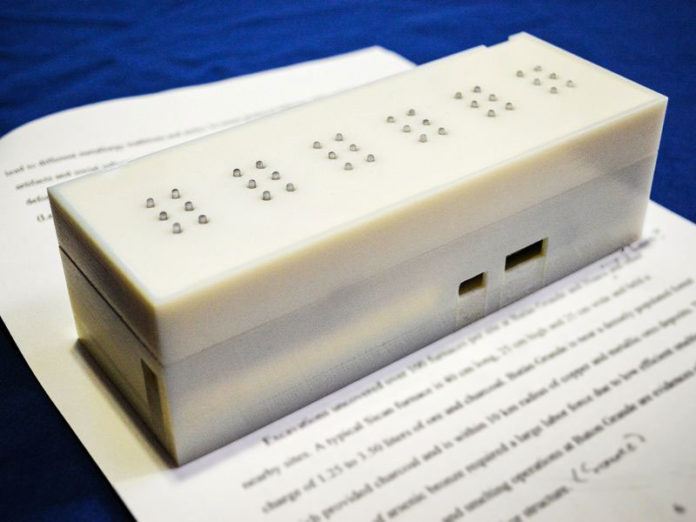Six undergraduate students at Massachusetts institute of Technology have developed a portable translator device called Tactile. The tactile converts text to braille in real time. They recently won one of the $10,000 Lemelson-MIT Student Prizes for 2017, which they will spend refining and improve the device.
Most of the similar kind of devices are expensive and limited to the translation of the text that is available digitally. For instance, the HumanWare Brilliant attached to a computer or mobile device to translate text into braille, and it costs $2,595.
Chandani Doshi, one of the team member said, “Currently, the camera only takes a picture of its field of view. We are aiming to make the device similar to a handheld scanner that allows the user to scan the entire page in one go.
These days, there are various approaches for people with disabilities that are getting more attention than previous. Even the Europian Union has started that will mandate that products and services be more accessible to people with disabilities, including the blind. The Women’s March on Washington even added a virtual branch so people with disabilities could attend that way if they chose to.
According to estimate, almost 1.3 million people are blind in the US. Some of them are visually impaired whereas some of them have low vision. The blind people can understand braille, mostly due to a chronic teacher shortage in this area.
The device tactile has the size of a candy bar. It can display six characters at a time. Users can place it down on a line of text and with a push of a button, the device takes an image through its inbuilt camera. Optical character recognition then takes over, identifying the characters on the page using Microsoft’s Computer Vision API.
Then the team used a software translates each character into braille and subsequently triggers the mechanical system in the box to raise and lower the pins. They have applied for a patent for the integration of the system through Microsoft’s #MakeWhatsNext patent program, which supports women inventors.
The team said, “It will make any book in any library accessible to those who do understand braille — and it will also make braille itself far more accessible and easy to learn. In fact, this portable translator might be the revolution braille needs to bring a higher level of literacy back to the blind community. Students hope to bring the tactile in the market within two years.”
Students hope to bring the tactile in the market within next year.
